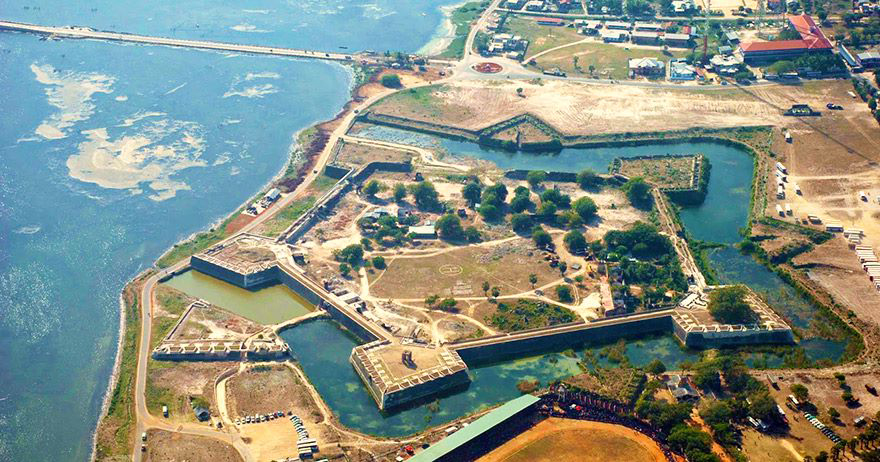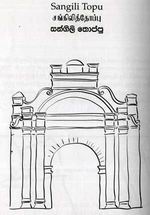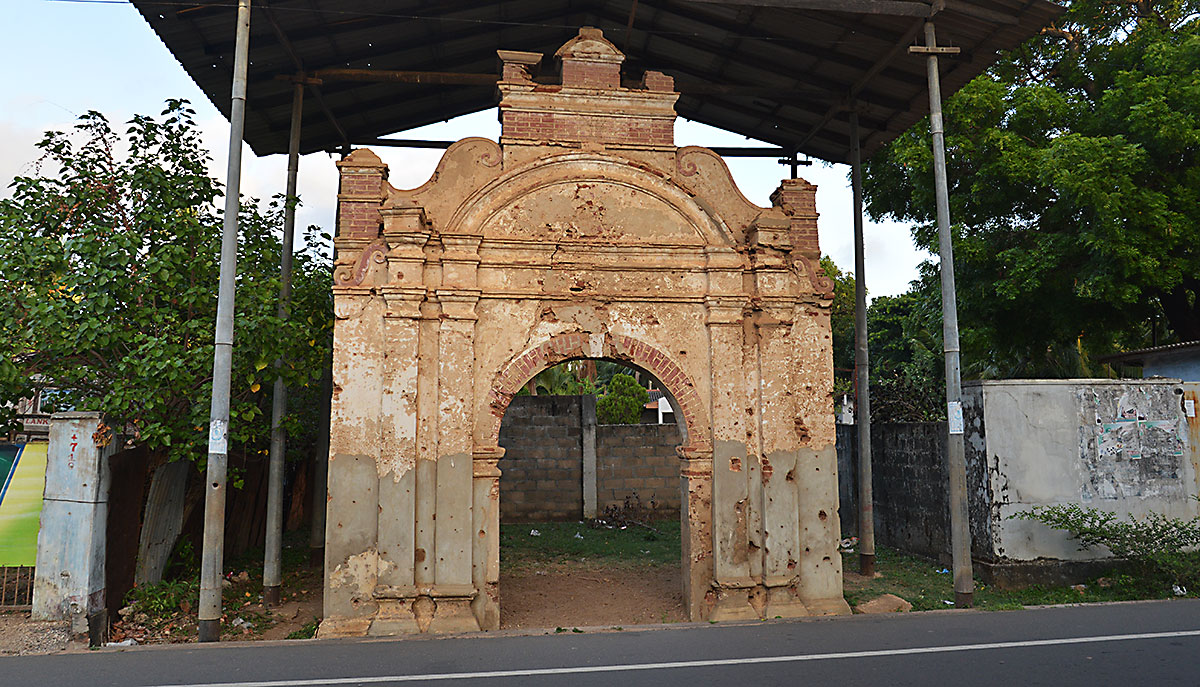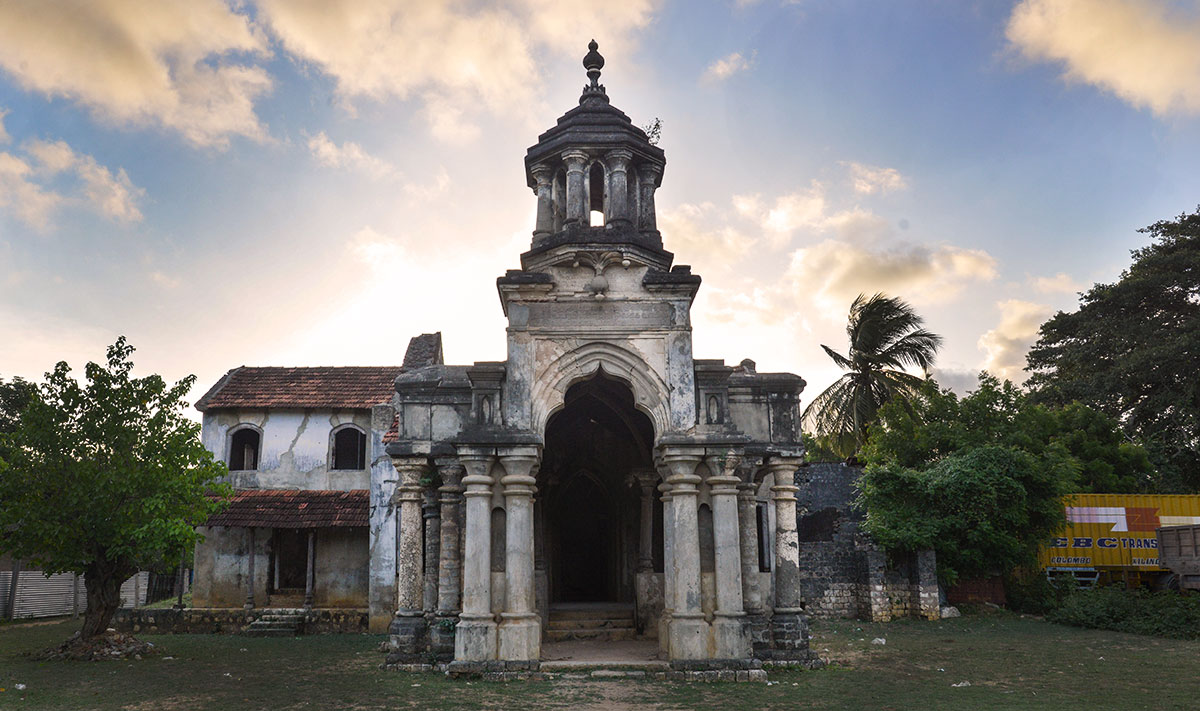Chronological, Historical, Biographical – JOHN H. MARTYN

This book by John H. Martyn chronologically lists the events connected with Jaffna from 1505 onwards. It also lists details of some of the prominent families of Jaffna at that time and is a good reference source for Genealogists.
However the entire appendix is dedicated to an in depth analysis of the ‘Poothathampi’ episode involving Don Manuel D’Andrado and the Tamil Mudaliyar Poothathamby. The book lists and analyses all the references made to this episode in historical documents. This is the most detailed analysis of this story ever. It dissects the many incarnations of this story piece by piece , analyses and lays to rest all arguments made by the various writers.
THE ANDRADO-PUTHATHAMBY STORY
Dryden has observed that “truth is required as the foundation of history to inform us.” This is the first and most important property – the necessity of which cannot be gainsaid – to keep our understanding from the impositions of falsehood. Nevertheless, close students of history not uncommonly find the narrative of realities disfigured by their being mixed up with fables and figments. Very often facts are misrepresented, documents are garbled, and important questions and particular portions of history so treated by partisan writers as to become coloured with their passions and prejudices. This is particularly the case with regard to that portion of local history in which the two personages, whose story forms the subject of this review, played a part in the revolution that followed the Dutch occupation of the Jaffna Peninsula.
Andrado and Puthathamby are representatives of two rival sections of the Singhalese and Tamil Communities. The members of each section are to be found all over the island, dwelling side by side, in town and country. They hold important and responsible offices in every Department of the Public Service under Government. In the learned professions, and in the educational, mercantile and industrial lines, they take equal rank. As capitalists and large landed proprietors too, they are, in general, pretty well matched.
But the great disparity is in their numbers. The ‘Puthathamby’ section is by far the larger one. Here lies the true secret of the advantage that this section possesses over the other. Every intelligent man is aware that in most departments of life, where sectional interests come into question, numerical superiority is a potent factor in helping a party to have its own way and carry its point. In public meetings, the majority gets the day in all questions that come up for discussion. The same principle obtains in the case of parliamentary, municipal and other elections; and the candid reader knows how often racial prejudices, caste feelings and personal dislikes have operated against the election of the fittest and most eligible candidate. In like manner, in a community, the section, which is numerically weak, is always at a disadvantage; and when the sense of rivalry between it and the stronger section becomes accentuated, the position of the former becomes one of embarrassment. An unfounded story or a silly canard respecting the weaker section finds a large circle in the stronger one, to accept it without proof, add to it without scruple, spread it without hesitation, and comment on it without charity. When to the advantage which numerical strength confers on the larger section is added the power that it derives from its influence with high functionaries, local magnates and the dispensers of power and patronage, the facility and the success with which it can bring discredit on the weaker, by magnifying its faults and making light of its virtues, can better be imagined than described.
The story in question affords a striking instance of the artful tactics, which designing individuals of the Puthathamby section, confiding in the numerical strength of their party for the promotion of their interests, have invariably employed in order to belittle the Andrado section and raise themselves and their clan in public estimation. The careful, unbiased student of history will surely be shocked to find how the stern facts of the story have been suppressed and ingenious interpolations so cleverly foisted in, as to make a real culprit an unsuspecting and harmless victim. I will not take upon myself the invidious task of narrating the story, the incidents of which occurred more than two centuries and a half ago. I shall just quote the story as told by different writers at different times and leave the reader to discern the truth and form his own judgment, adding only such remarks as are justified by the circumstances of the case.
Years on, pieces of the story remains in present day Jaffna. A recent travel guide ‘The essential guide for Jaffna’ by Philippe Fabry (Viator Publications, Colombo, 2003) contains the following interesting piece of information about the remains of Poothathamby’s mansion. In the storyline Poothathamby entertains Mudaliyar Andrado at this residence. The rest, as they is history.
Page 21: ” This arch bears the name of King Sangili, or Sankili (1519) and some authors believe it marks the entrance to the palace from which only this ornamental arch, still remains. Locals call it also Poothathamby Vealaivu (arch) and Dr Kunarasa says that it was the headquarters of Poothathamby mudeliyar, a Tamil mudeliyar (administrator), from the Dutch period.”



References to the story are met with in the following works:
Notes on Jaffna 1 – Don Philippus Baldaeus
Beschryving van het Machtige Eyland, Ceylon. Don Philippus Baldaeus, Amsterdam 1672, fol:
Notes on Jaffna 2 – History of the Kingdom of Jaffna
The Yalpana Vaipava Malai; or The History of the Kingdom of Jaffna
Notes on Jaffna 3 – The Ceylon Almanac
No 3. The Ceylon Almanac and Compendium of Useful Information for the
Notes on Jaffna 4 – The Vinea Taprobanea
The Vinea Taprobanea by Philip Canjamanadan. (p. 94.) Of this work Mr.
Notes on Jaffna 5 – “Puthaththampi Nadakam” by Davidu
“Puthaththampi Nadakam” by Davidu. No. 5. Writes Mr. Brito:- Nadakam is drama.
Notes on Jaffna 6 – Yalpana Chariththiram
Yalpana Chariththiram or the history of Jaffna” by S. John (Page 58)
Notes on Jaffna 7 – —”A Hand Book to the Jaffna Peninsula”
No. 7—”A Hand Book to the Jaffna Peninsula” by S. Katiresu Proctor,
Notes on Jaffna 7A – Poothatamby’s Treason
THE TRUE STORY OF POOTHATAMBY’S TREASON The Nadagam or Drama of which
Notes on Jaffna 8 – Jaffna History
No 8. JAFFNA HISTORY; A. Mootootambypillai. (1912) This is a work written
Notes on Jaffna 9 – Yalpana Vaipava Kuvmathy
No 9. Yalpana Vaipava Kuvmathy – 1918 This is a recent publication.
- Of the two commandements, Jaffnapatam and Galle, the former always took precedence, so that, whenever a sudden vacancy occurred in the Governorship of the Island, it was the Commandeur of Jaffnapatam usually, as the highest in rank after the Governor, who was called upon to temporarily administer the Government. This rule was in a few instances departed from for special reasons, as in the cases of Commandeur Arnold Mol in 1723, of Jan Paul Schagen in 1725, and Jan Maccara in 1736, who as Commandeurs of Galle had to take up the reins of Government on the sudden death of the Governor. And there was the case of Commandeur Gerrard Joan Vrelandt of Galle, who, from that post permanently succeeded Stein van Gollenese as Governor of the island. But these were exceptional cases, because It was the practice for the Commandeur of Galle to go on promotion to Jaffna, but never the contrary Report on the Dutch Records By. R. G. Anthonisz, Government Archivist
- See list of Dutch Governors.
- Simon Casie Chitty in his Gazeteer (p. 52) says:- Though the Singhalese are professors of the tenets of Buddha (which recognise no distinction of caste) yet caste is observed among them with the nicest punctiliousness.
- De pedra pomes: Coral Stone?
- Opposite Lisbon.
Details from the Appendix of the book Notes on Jaffna, American Ceylon Mission Press, Tellippalai, Ceylon 1923.